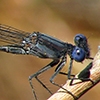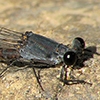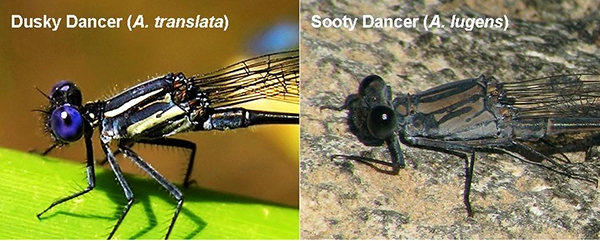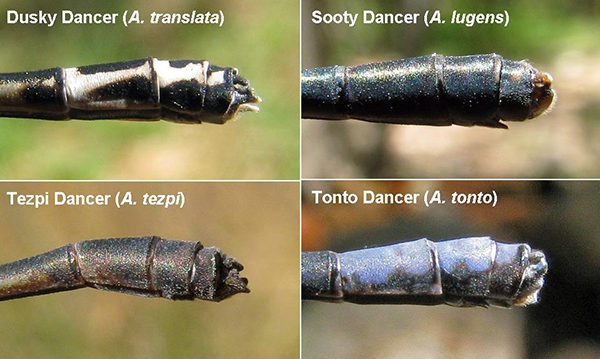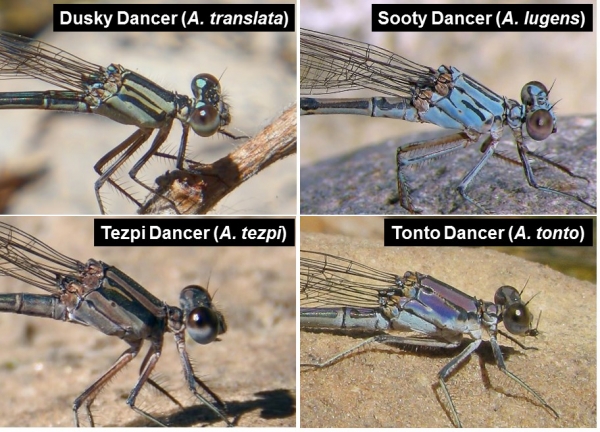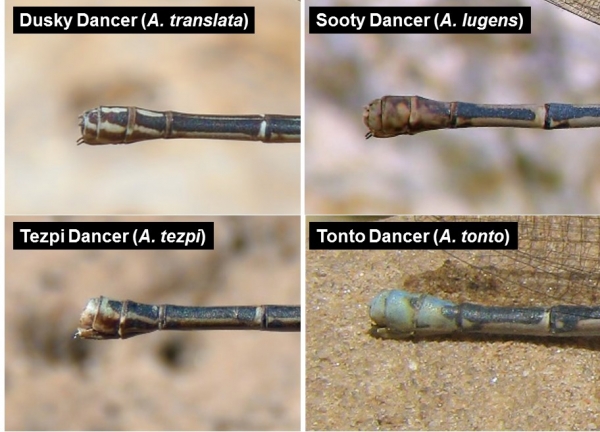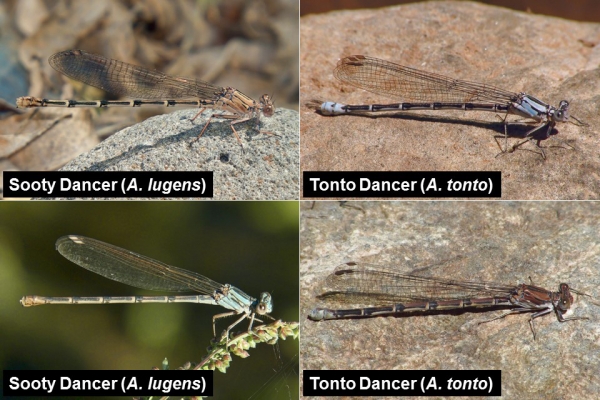Four rather similar dancer (Argia sp.) species that are found in Arizona are the Dusky, Sooty, Tezpi, and TontoDancers. The Tezpi Dancer is confined to the southeast portion of the state, but the other three species are more widespread, can be found at a same location, and can be common. To separate mature males of the four species, focus on the size, wing and eye color, thorax color pattern, and abdomen color. In the hand, study the appendages, the shape of which is species-specific.
Dusky vs Sooty vs Tezpi vs Tonto Dancers
-
Argia translata
-
Argia lugens
-
Argia tezpi
-
Argia tonto
Male Comparison
Size
- Dusky Dancer: smallest of the four species; average: 35 mm
- Sooty Dancer: largest of the four species; average: 45 mm
- Tezpi Dancer: intermediate between Dusky and Sooty Dancers; average: 38 mm
- Tonto Dancer: intermediate between Dusky and Sooty Dancers; average: 41 mm.
Wing color
- Dusky Dancer: wings clear
- Sooty Dancer: wings clear or with light brown tint
- Tezpi Dancer: wings generally tinted brown
- Tonto Dancer: wings clear
Eye color
- Dusky Dancer: only species with conspicuously blue-violet eyes
- Sooty Dancer: dark
- Tezpi Dancer: eyes of two colors: dark above and gray below
- Tonto Dancer: dark brown.
Thorax
- Dusky Dancer: humeral stripe initially split, becomes entirely dark with age. Entire thorax becomes dark gray and pruinose. In males in tandem, contrasting dark and pale stripes
- Sooty Dancer: thorax entirely dark, becoming pruinose with maturity. Dark humeral stripes become apparent during mating
- Tezpi Dancer: front of thorax metallic black; wide dark humeral stripe; sides of thorax dark gray
- Tonto Dancer: thorax violet. Humeral stripe wide anteriorly, but forms only a thin dark line posteriorly
Head and thorax
Thorax color changes
The thorax of some male dancers undergoes a striking color change during mating. The pictures below show a Dusky and a Sooty Dancers in tandem. Compare with above pictures.
Female Comparison
To separate females of the above dancer species, focus on size, wing color, thoracic coloration pattern, and coloration pattern of the terminal appendages.
Size: see separation criteria for males
Wing color: see separation criteria for males
Thorax coloration pattern
- Dusky Dancer: black humeral stripe is deeply forked
- Sooty Dancer: black humeral stripe is deeply forked. Branches of the fork tend to be connected by mid-length transverse bar to form a H
- Tezpi Dancer: black humeral stripe is forked, but not as deeply as in the Dusky Dancer. Lower branch of the fork thicker than the upper branch
- Tonto Dancer: black humeral stripe as in male: not forked and with very thin middle section
Terminal abdominal segment coloration pattern
- Dusky Dancer: segment 9 has black dorsolateral stripes that extend to segment 10
- Sooty Dancer: segments 8 and 9 generally have incomplete black stripes
- Tezpi Dancer: segment 9 as in Dusky Dancer, but dark stripes do not extend to segment 10 which is, therefore, pale
- Tonto Dancer: segments 8-10 pale, but in most females with small dark spots at the base of segments 8 and 9
